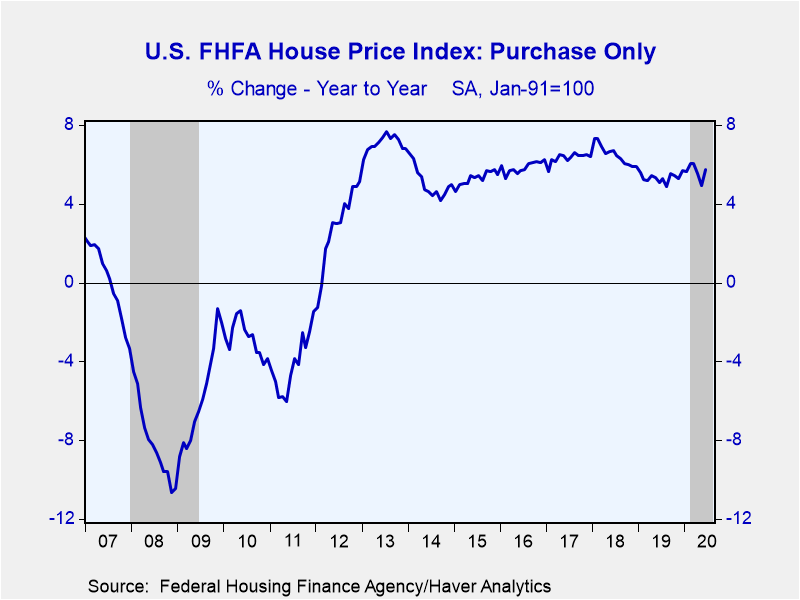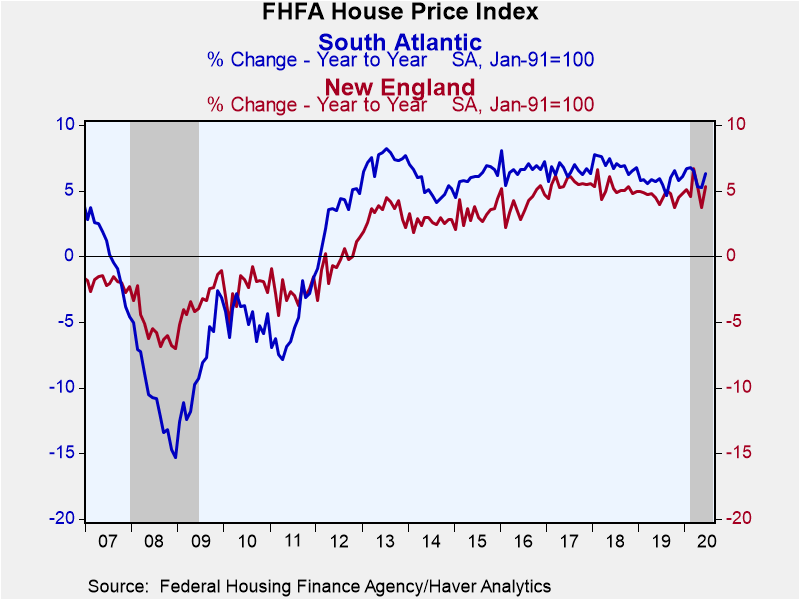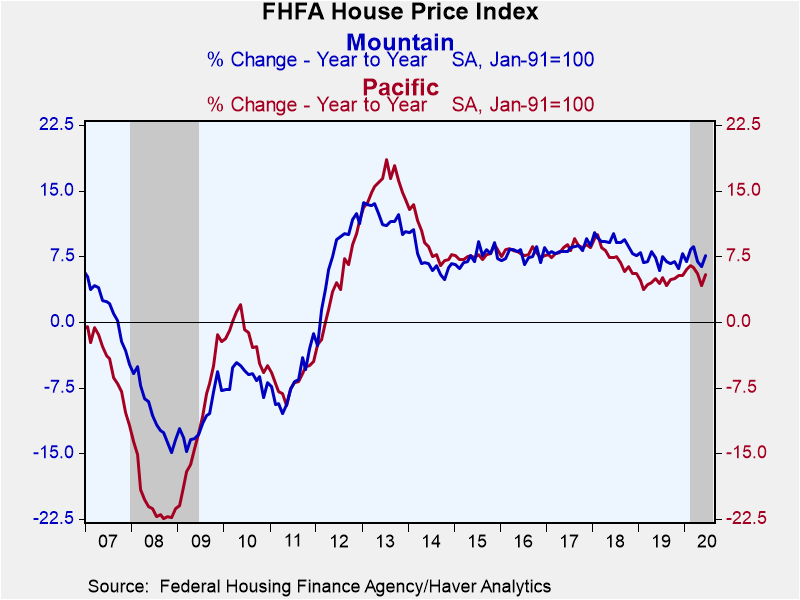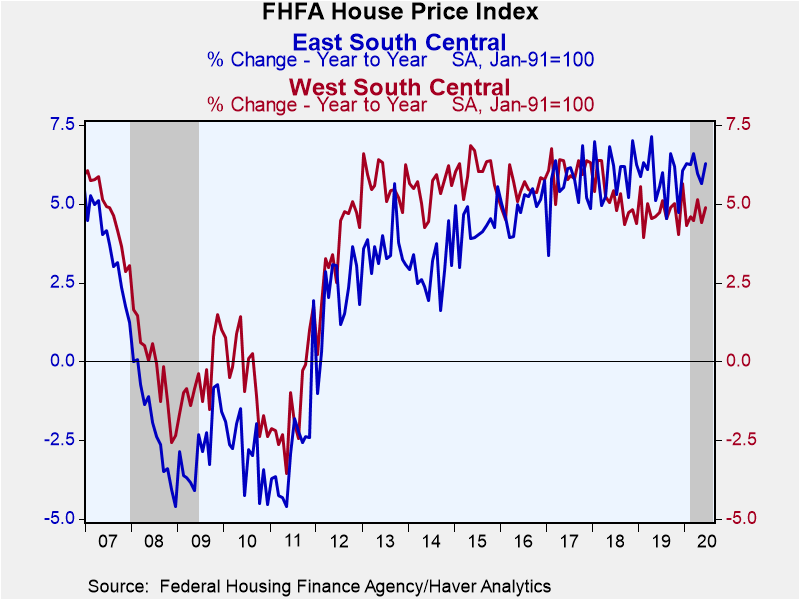 Global| Aug 25 2020
Global| Aug 25 2020U.S. FHFA House Prices Rebound in June
Summary
• FHFA home price index increases 0.9% in June after declining 0.2% in May (only COVID-related decrease). • Eight out of nine regions show price gains. The Federal Housing Finance Agency (FHFA) Price Index jumped 0.9% in June, [...]
• FHFA home price index increases 0.9% in June after declining 0.2% in May (only COVID-related decrease).
• Eight out of nine regions show price gains.
The Federal Housing Finance Agency (FHFA) Price Index jumped 0.9% in June, following a slightly upwardly-revised 0.2% decrease in May (was -0.3%). Over the last year, home prices are up 5.7%, after growing 4.9% year-on-year in May and 6.1% y/y in February. Based on this measure, home prices are up 1.0% since February 2020.
Home prices increased month-on-month in eight of the nine census divisions, with price increases ranging from 0.6% in the West North Central to 1.3% in the East South Central and Pacific regions (5.6%, 6.3% and 5.5% y/y respectively). Meanwhile, prices edged down 0.1% in the Mid-Atlantic region and were up 4.3% y/y, the weakest regional y/y performance.
The FHFA house price index is a weighted purchase-only index that measures average price changes in repeat sales of the same property. An associated quarterly index includes refinancings on the same kinds of properties. The indexes are based on transactions involving conforming, conventional mortgages purchased or securitized by Fannie Mae or Freddie Mac. Only mortgage transactions on single-family properties are included. The FHFA data are available in Haver's USECON database.
| FHFA U.S. House Price Index, Purchase Only (SA %) |
Jun | May | Apr | Jun Y/Y | 2019 | 2018 | 2017 |
|---|---|---|---|---|---|---|---|
| Total | 0.9 | -0.2 | 0.1 | 5.7 | 5.3 | 6.5 | 6.4 |
| New England | 1.2 | -1.0 | -0.5 | 5.3 | 4.6 | 5.2 | 5.6 |
| Middle Atlantic | -0.1 | -0.1 | 0.1 | 4.3 | 4.5 | 5.3 | 4.7 |
| East North Central | 1.0 | -0.3 | 0.4 | 5.8 | 5.5 | 6.4 | 5.8 |
| West North Central | 0.6 | 0.0 | 0.8 | 5.6 | 5.1 | 6.0 | 5.2 |
| South Atlantic | 0.9 | 0.4 | -0.4 | 6.2 | 5.8 | 7.1 | 6.5 |
| East South Central | 1.3 | -0.5 | 0.5 | 6.3 | 5.8 | 6.0 | 5.5 |
| West South Central | 0.9 | -0.3 | 0.6 | 4.9 | 4.8 | 5.2 | 6.1 |
| Mountain | 1.2 | -0.4 | -0.1 | 7.6 | 7.1 | 9.1 | 8.4 |
| Pacific | 1.3 | -0.7 | -0.1 | 5.5 | 4.7 | 7.4 | 8.4 |
Gerald D. Cohen
AuthorMore in Author Profile »Gerald Cohen provides strategic vision and leadership of the translational economic research and policy initiatives at the Kenan Institute of Private Enterprise.
He has worked in both the public and private sectors focusing on the intersection between financial markets and economic fundamentals. He was a Senior Economist at Haver Analytics from January 2019 to February 2021. During the Obama Administration Gerald was Deputy Assistant Secretary for Macroeconomic Analysis at the U.S. Department of Treasury where he helped formulate and evaluate the impact of policy proposals on the U.S. economy. Prior to Treasury, he co-managed a global macro fund at Ziff Brothers Investments.
Gerald holds a bachelor’s of science from the Massachusetts Institute of Technology and a Ph.D. in Economics from Harvard University and is a contributing author to 30-Second Money as well as a co-author of Political Cycles and the Macroeconomy.









